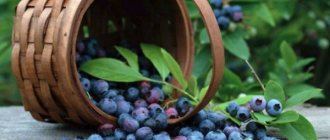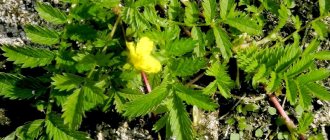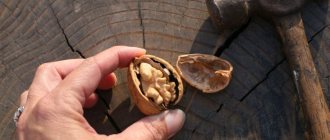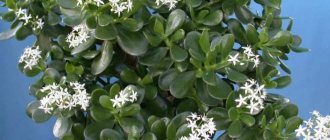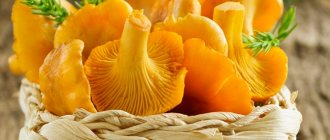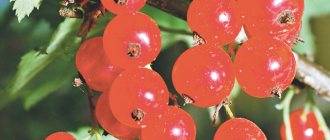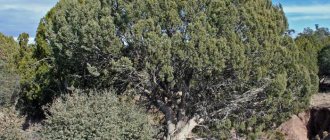Loading…
Loading…
The medicinal properties of Mahonia holly have been known for a very long time. This is a unique evergreen plant that grows as a shrub. Mahonia is valued for its appearance: glossy foliage and yellow flowers. This plant is loved by landscape designers and often use lush bushes as a hedge.
Where does it grow
Mahonia can be found throughout North America, from the southern regions of Canada to sunny California. Gardeners also grow this plant in Europe. In our country, it is planted in the Moscow region, in the southern regions, and in the Urals. The climate of the USA is not very different from ours, so the shrub feels good in almost any weather conditions.
The plant belongs to the barberry family. Because of its small blue fruits, it is called Oregon grape, American barberry. The name of the genus itself comes from the name of the famous US botanist Bernard McMahon, who spread flora on the continent, transporting plants from the western shores of the country to the eastern. In 1806, he first published the American Garden Calendar, which indicated the best time to plant certain types of flowers and trees.
Contraindications and possible harm
It is impossible to use medicines obtained from mahonia holly in case of a number of pathological conditions and chronic diseases, including chronic diarrhea, hyperacid gastritis and ulcerative condition in diseases of the duodenum.
Preparations based on the root of this plant are contraindicated for use during pregnancy and breastfeeding. Among other things, use in the presence of individual intolerance, expressed in attacks of severe nausea and repeated diarrhea, is strictly prohibited.
What does it look like
Mahonia is a low evergreen woody plant. The shrub grows only 80-100 cm in height, some species - up to two meters. The roots grow strongly and produce numerous shoots, which is why thickets soon form. Young shoots have a gray bark color with a pink tint, which changes to gray-brown as they grow older. Numerous branches stretch in different directions, due to which a lush crown is achieved. The shrub tightly surrounds itself with wide foliage, which covers it like a mantle.
The leaves are so unusual for shrubs that they deserve special attention. They are oval-oblong in shape, with teeth pointed towards the edges, which are located along the leaf. Length - up to 9 centimeters, width - up to 2.5. The bottom surface is matte, the top side is glossy, deep green. The leaves are dense and have a leathery texture. Petioles are brown-red. Throughout the year, the foliage may change color from green to red to purple. In the autumn-winter period, the bushes play with a bright palette of contrasting shades.
Mahonia flowers are small - up to 8 mm in circumference. They have an interesting structure. The cups are composed of an inner, semi-closed tier of petals and an outer, with open petals. The buds are arranged in multiple inflorescences, blooming in clusters on the branches. The flowers are a pleasant light yellow shade. Lush round brushes of golden color, collected in small bouquets, stand out brightly against the background of dense greenery. During the flowering period, the plant looks very picturesque.
It blooms in April-May, sometimes for the second time in October. After flowering, the fruits ripen. Just like the buds, they are collected in clusters. In shape they resemble barberry, but more rounded. The diameter of the berries can reach 8 mm, length - one centimeter. The color of the fruit is dark blue, closer to indigo. The surface is covered with a dense bluish coating, which gives the berries a wonderful blue tint. Azure clusters against the background of burgundy foliage are an indescribably beautiful sight.
By association with the vine, which the plant resembles in autumn, mahonia is called Oregon grape. Thanks to spring flowering, seasonal changes in foliage colors and ripening fruits, the plant is attractive throughout the year. This property is actively used to decorate local areas.
Collection and preparation of medicinal raw materials
Mahonia holly or Oregon grape berries should be harvested as soon as they are fully ripe. High-quality plant raw materials should have an oblong shape and have a very characteristic dark blue or blackish-purple color. Fully ripened berries have a light but quite visible fluff on the surface, as well as a bluish coating. As a rule, the berries ripen completely around the end of August or the first ten days of September , after which you can start picking.
A characteristic feature of the plant is the ability of fully ripened fruits to remain on the bush without falling for five months without losing all their beneficial qualities and taste properties.
It is recommended that all collected berries, for the purpose of further long-term storage, be dried in bulk , in one word, on the surface of a paper sheet under the rays of sunlight. The fruits also retain all their properties very well, which after picking are sprinkled with granulated sugar. One kilogram of collected plant material, as a rule, contains more than five thousand fruits.
Mahonia holly berries should be harvested immediately after they are fully ripe.
Plant materials, represented by flowers, must be collected starting from the second half of May. It is during this period that the maximum amount of useful components can accumulate in flowers. To collect plant materials quickly and accurately, ordinary soda scissors are used, which do not damage the branches of the medicinal plant when cutting. You need to dry flowers in the same way as berries, in bulk on paper or cardboard sheets.
Also read: Astragalus membranaceus: botanical description, beneficial properties and applications
Roots and bark are most often harvested in the autumn. For this purpose, carefully, without damaging the adult bush, all root shoots are dug up. The roots, cleared of soil, should be thoroughly washed with running water, then dried at room temperature and chopped. It is optimal to dry the roots and bark on paper or cardboard sheets in a warm and fairly dry, well-ventilated area.
Varieties
In Northern Europe and the USA, shrubs are widely used in landscape design, so breeders are developing new species. Popular varieties:
- Mahonia creeping
- Japanese
- Versicolor
- Winter sun
Creeping Mahonia is a common type of shrub that is loved by gardeners. It blooms twice a year - in May and September. The inflorescences are round, large, lemon-colored. The variety is popular in the middle zone due to its good cold resistance. The bush produces fruits that are used for canning.
Japanese can be found in nature in the USA, China, and Japan. It grows in regions with warm climates. In these countries, the flowering period lasts from December to May, which increases the decorative qualities of the plant. Long straight branches are strewn with soft yellow buds on all sides. The shrub can grow up to two meters in height.
The Versicolor variety has a rich range of colors. The foliage turns different shades depending on the time of year. In summer, the leaves are green, with spots of pink, orange, and beige. By winter they turn purple, burgundy, interspersed with bronze. This plant pleases with its color diversity all year round.
Winter sun is a type of plant with an unusual arrangement of branches. The shoots have an interesting structure: they extend from the center to the sides, like rays. On the central branches growing from the middle upwards, buds form. During the flowering period, they appear as cone-shaped garlands. From below they are surrounded by foliage in a wide fan. This variety is grown for decorative purposes.
Home Recipes
Bark tincture
A tincture based on mahonia bark is used to treat diarrhea, gout, and dyspepsia. Treats:
- kidney disease (how is birch sap beneficial for the body),
- gallbladder,
- liver (the benefits and harms of apricots are described here),
- rheumatism.
Fill the pre-crushed plant bark with vodka in a ratio of 1 to 10.
Leave to infuse in a dark place for seven days. If you suffer from the diseases listed above, take 5-15 drops of the product diluted with water.
Beneficial features
The calorie content of berries is only 29 kcal per 100 g, so they can be safely used for weight loss. The pulp contains an increased concentration of vitamins E and C. Thanks to this, the fruits have antioxidant properties, stimulate the induction of collagen by the body, and accelerate regenerative reactions. A substance such as berberine increases appetite, stabilizes the gastrointestinal tract, and improves the condition of intestinal microflora.
Tannins provide an anti-inflammatory, disinfecting effect. They affect the elasticity of the walls of veins and arteries and improve hematopoiesis. The microelements manganese and copper are responsible for the normal functioning of the musculoskeletal system and rapid cell restoration. They affect brain activity and the activity of liver enzymes. Zinc supports the normal functioning of epidermal cells. Eating mahonia fruits has the following effects on the body:
- accelerates metabolic processes, promotes the removal of toxic substances and heavy metal salts;
- cleans the lumen of blood vessels;
- stabilizes the functioning of the heart muscle;
- minimizes the risk of malignant tumors;
- rejuvenates the body, improves the appearance of hair, nails, skin;
- prevents the occurrence of colds;
- eliminates symptoms of dermatological diseases;
- promotes the removal of bile, removes kidney stones.
Medicinal properties of holly mahonia
The fruits of Mahonia holly are used as a general tonic. The product has medicinal properties. Berries help in the prevention and fight against many diseases.
Beneficial properties of mahonia holly:
- pronounced choleretic effect;
- the plant helps get rid of constipation;
- improves the condition of hemorrhoids;
- restores bone marrow function, including after chemotherapy;
- normalizes the functioning of the cardiovascular system;
- improves blood composition;
- fights psoriasis and other skin diseases;
- activates metabolism;
- activates immune properties;
- lowers the level of bad cholesterol;
- relieves inflammation;
- destroys viruses and pathogenic bacteria.
Application
Mahonia berries are used for culinary and medicinal purposes. They find this use due to their natural composition, which determines their medicinal properties. Useful elements are found equally in the pulp and skin. In cooking, fruits are used mainly heat-treated. They are made from:
- jam
- compotes, fruit drinks
- jams
- tinctures
- pie filling
Fresh berries have a pleasant sweet and sour taste. Its juice is added to ice cream and dessert creams. Some people like to eat it by grinding it with sugar. However, not everyone likes its slightly astringent taste. Muesli is made from dried fruits. Decoctions of dried berries are drunk for blood diseases and intestinal dysfunction. Hot drinks also help with colds and weakened immunity. Medicinal infusions can be made not only from the fruits, but also from the bark and flowers of the plant. Compresses made from these compositions are used to treat skin pathologies.
ethnoscience
There are folk recipes using mahonia holly, which you can prepare at home yourself.
Mahonia holly is used as an ornamental plant in landscaping areas.
It is resistant to gas and smoke, so it is also used in large cities.
The plant is used in the formation of living borders and hedges. Mahonia blooms beautifully, and its flowers are used to make luxurious bouquets and wreaths.
Mahonia berry is low in calories. 100 grams of product contains 29.6 kcal.
Use in the garden
Plants such as mahonia are grown more for decorative purposes than for their harvest. The unusual structure of the leaves, large caps of inflorescences, bright clusters of berries - all this distinguishes the shrub from other plants. In European countries it is often used for landscaping parks and residential areas. In the garden it looks great both solo and in various combinations. In the garden, its use can be as follows:
- Hedge, border.
- Decoration of lawn, flower beds.
- Addition to the group of flowering plantings.
- Framing of decorative stones.
- Background planting to fill empty space.
If the garden plot is located close to the slopes, it is good to plant these places with mahonia to protect them from shedding. The plant is firmly anchored in the ground thanks to its branching roots, and at the same time it will decorate the area and decorative fencing. Shrubs can also be used to dilute low-growing plantings and be used in the lower tier in combination with tall trees. The unpretentiousness of the plant is a big plus, making it much easier to care for your summer cottage.
To make a living fence using mahonia, it is enough to plant several seedlings in a straight line. After some time, the bushes will independently grow into a real hedge, in which there will be no gap. The young growth that forms on the roots prevents weeds from multiplying, which saves time on weeding.
The foliage of the plant does not fall all year round, which makes it possible to use it for framing decorative stones. The ability of the root system to grow widely is used to fill empty spaces around the composition. By pruning branches, you can ensure that the bushes change their shape in the desired way, emphasizing the beauty of other plants. Mahonia perfectly complements alpine slides. While other plants wither and wither for the winter, Oregon grape fills the void with its lush foliage, preventing the arrangement from looking dull and neglected.
The bush can be used to decorate a winter garden. It grows well in gravelly soil. An evergreen plant will decorate the area with its foliage regardless of the time of year. The exotic appearance of mahonia will add exoticism to the garden. A big plus of the plant is its high adaptation to weather conditions. It tolerates both drought and cold well. This minimizes the effort required to care for it. The shrub is resistant to diseases and is not affected by various garden pests.
Mahonia goes well with conifers. Dense foliage fills the empty space well, and the yellow inflorescences and blue fruits contrast well with the green needles. Low, dense growth of Oregon grapes around the rose garden is a wonderful arrangement for single or bushy decorative flowers. This plant combines well with other flowering shrubs. It looks harmonious with the following plants:
- magnolia grandiflora;
- Camellia tree;
- rhododendron;
- mock orange;
- action.
In addition to its decorative function, mahonia also plays a useful role in the garden. She is not afraid of insects that attack the fruit-bearing trees we are accustomed to. The plant is planted between fruit and berry plantings (apple tree, cherry, currant, gooseberry) to protect them from insects. During flowering, the sweet aroma emanating from the buds attracts bees and bugs, which pollinate the flowers.
Use of berries for medicinal purposes
Mahonia holly first showed its beneficial properties as a plant, from the flowers of which a fragrant tonic decoction is obtained, which helps replenish strength, ward off fatigue, and restore vital energy.
Initially, they drank it to fight colds, soothe an irritated stomach, and heal the liver or kidneys. Mahonia decoction was used to wash the body for skin ailments.
Medicine from bitter mahonia root is easy to prepare at home:
- Pour 1 tablespoon of ground bark into dust with a glass of boiling water, close the lid, leave for about 20 minutes. The decoction is drunk to improve appetite, treat gout, to cleanse the body, or used externally as a facial tonic. It is necessary to refrain from treating children with a medicinal decoction prepared independently.
- Mahonia root tincture is prepared as follows. The bark should be removed from the branches of the bush, crushed, and poured with vodka in a ratio of one to ten. Leave in the dark, covered, all week. This tincture should be taken orally according to the rule: dissolve 5 to 15 drops of tincture in a tablespoon of drinking water. People who do not suffer from any of the listed ailments should not take alcoholic tincture of mahonia. Moreover, it should not be given to children.
- Tincture of mahonia flowers is intended for gout sufferers: pour 1 teaspoon of dry crushed inflorescences with 1.5 cups of boiling water, leave covered, cool, strain. It is recommended to take the tincture no more than 3 times a day, 1/3 cup before meals (morning, afternoon and evening).
At home, medicinal decoctions and infusions must be prepared under sterile conditions, using glass or enamel containers as containers to avoid unwanted chemical reactions from contact with metal surfaces. It is impossible to violate the specified dosages: this is fraught with poisoning.
No matter how useful mahonia may seem, individual intolerance to the plant’s components still occurs. Home treatment or prevention is permissible only after the recommendations of a doctor and only in the absence of allergic reactions, nausea and diarrhea. If the listed symptoms appear, then mahonia for oral use is prohibited.
Interesting Facts
In America, a dye is made from mahonia. To do this, use all parts of the bush. The rhizomes and bark give a yellow tint, the leaves are green, the fruits are blue-lilac. Before chemical paints began to be used in industry, Americans actively used natural ingredients. Jeans from the famous Levi's brand were dyed with a mixture of Oregon grape berries.
Locals make a cooling drink from the berries, like our lemonade. The fruits are also used to make wonderful homemade liqueurs and wines. They have a pleasant sweetish taste and a beautiful deep purple color.
Mahonia planted on a summer cottage will delight you with its unusual appearance at all times of the year. And invigorating drinks from it will warm you in winter and bring energy in summer.
Reproduction of mahonias
Reproduction of mahonia holly is possible by cuttings, seeds, root shoots or layering.
The seed method is less desirable, because here we encounter certain difficulties:
- The need to stratify seeds.
- Most mahonias are hybrid in one way or another, so the likelihood of obtaining a varietal bush is low.
- Long term for growing seedlings.
- It takes a long time to wait for flowering, three whole years.
The other three methods do not have all these disadvantages. Both the cuttings of Mahonia holly and its shoots and layerings carry the characteristics of the parent plant with all its inherent varietal characteristics.
Semi-lignified cuttings are used; they are cut with 6-8 buds in spring or autumn. In March, the cuttings are treated with a solution of a root formation stimulator and put to germination, burying 2 buds in nutrient soil. It is advisable to create conditions under which the roots will be warm and the tops will be relatively cool. For example, we place the pot next to the radiator so that the top of the cutting is higher than the window sill.
The cuttings are bent in the spring and the branches are pinned to the ground, and in the fall they are separated from the mother bush. The percentage of obtaining high-quality seedlings is higher than when rooting cuttings.
If the mahonia bush has produced root shoots, then it can be considered an excellent material for propagating the variety.
Diseases and pests
Infections and insects that attack garden crops can become a real disaster. And even though mahonia is hardy, the bushes are susceptible to some fungal diseases:
- powdery mildew. It is accompanied by the formation of a whitish coating on the leaves, fruits and shoots, which is caused by microscopic fungi and oomycetes. Spots containing spores stimulate the secretion of clear droplets. Repeated infection leads to rotting and death of the plant. At the first signs, it is necessary to treat the damaged areas with copper preparations or spray the trees with a soap-soda solution, colloidal sulfur, and fungicides “Karatan”, “Fundazol”, “Topsin M” for 10-12 days. Repeat the procedure 1 time per day.
- rust. Often develops on barberry. Fungi, sources of infection, usually grow on above-ground parts; some species overwinter in the roots. They penetrate plant cells and germinate with bright orange, red spores. They spread through the air. It is recommended to separate the diseased bush from healthy ones and treat it with Abiga-Pik, Oksikhom, Bayleton, and Zineb.
- phyllosticosis. Characterized by grayish-white spots and dark brown or purple borders on the leaves. Reduces the number of flowers and berries. Both for black spotting and during the period of phyllostictosis, “Fthalan”, “Kaptan”, “Oxychom” should be used; stagonosporosis. A distinctive feature of the disease is the unreasonable slowdown in the growth of mahonia and the presence of oval spots on the leaves. Treatment is carried out with drugs similar to those for phyllostictosis.
The use of effective preventive measures will help to avoid damage to garden crops. Every spring and on the eve of cold weather, the soil is treated with 3% iron sulfate, fed with phosphorus-potassium and nitrogen fertilizers, and sprayed with a 3-5% solution of Bordeaux mixture.
